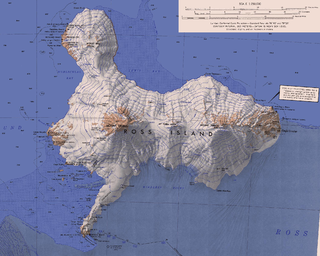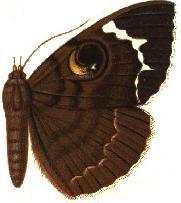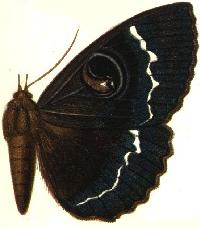
Ross Island is an island formed by four volcanoes in the Ross Sea near the continent of Antarctica, off the coast of Victoria Land in McMurdo Sound. Ross Island lies within the boundaries of Ross Dependency, an area of Antarctica claimed by New Zealand.

Mount Erebus is the second-highest volcano in Antarctica and the southernmost active volcano on Earth. It is the sixth-highest ultra mountain on the continent. With a summit elevation of 3,794 metres (12,448 ft), it is located in the Ross Dependency on Ross Island, which is also home to three inactive volcanoes: Mount Terror, Mount Bird, and Mount Terra Nova.

HMS Erebus is a Hecla-class bomb vessel constructed by the Royal Navy in Pembroke dockyard, Wales, in 1826. The vessel was the second in the Royal Navy named after Erebus, the dark region of Hades in Greek mythology.

Robert Swinhoe FRS was an English biologist who worked as a Consul in Formosa. He discovered many Southeast Asian birds and several, such as Swinhoe's pheasant, are named after him.

HMS Terror was a specialized warship and a newly developed bomb vessel constructed for the Royal Navy in 1813. She participated in several battles of the War of 1812, including the Battle of Baltimore with the bombardment of Fort McHenry. She was converted into a polar exploration ship two decades later, and participated in George Back's Arctic expedition of 1836–1837, the successful Ross expedition to the Antarctic of 1839 to 1843, and Sir John Franklin's ill-fated attempt to force the Northwest Passage in 1845, during which she was lost with all hands along with HMS Erebus.

Utetheisa is a genus of tiger moths in the family Erebidae. The genus was first described by Jacob Hübner in 1819.

Spilomelinae is a very species-rich subfamily of the lepidopteran family Crambidae, the crambid snout moths. With 4,132 described species in 340 genera worldwide, it is the most speciose group among pyraloids.

Franklin's lost expedition was a British voyage of Arctic exploration led by Captain Sir John Franklin that departed from England in 1845 aboard two ships, HMS Erebus and HMS Terror. A Royal Navy officer and experienced explorer, Franklin had served on three previous Arctic expeditions, the latter two as commanding officer. His fourth and last, undertaken when he was 59, was meant to traverse the last unnavigated section of the Northwest Passage. After a few early fatalities, the two ships became icebound in Victoria Strait near King William Island in the Canadian Arctic, in what is today the territory of Nunavut. The entire expedition, comprising 129 men, including Franklin, was lost.

Erebus is a genus of moths in the family Erebidae.
Crocidophora is a genus of moths of the family Crambidae. The genus was erected by Julius Lederer in 1863.

Chrysocraspeda is a genus of moths in the family Geometridae described by Charles Swinhoe in 1893.

Erebus aerosa is a moth of the family Erebidae first described by Charles Swinhoe in 1900. It is found in Indonesia.

Erebus jaintiana is a moth of the family Erebidae first described by Charles Swinhoe in 1896. It is found in the Indian state of Meghalaya and in Vietnam.

Erebus superba is a moth of the family Erebidae first described by Charles Swinhoe in 1908. It is found in the Indian state of Meghalaya and in Nepal.

Erebus Glacier is a glacier draining the lower southern slopes of Mount Erebus, Ross Island, Antarctica. It flows west to Erebus Bay where it forms the floating Erebus Glacier Tongue. It was named in association with Mount Erebus by the British National Antarctic Expedition, 1901–04, under Robert Falcon Scott.
Erebus Motorsport, formerly known as Erebus Racing, is an Australian motor racing team. The team competes in the Virgin Australia Supercars Championship with two Holden ZB Commodores. The team's current Supercars drivers are David Reynolds and Anton de Pasquale.
Erebus lombokensis is a moth of the family Erebidae first described by Charles Swinhoe in 1915. It is found on Lombok in Indonesia.
Erebus ipsa is a moth of the family Erebidae first described by Charles Swinhoe in 1918. It is found in Sri Lanka.

The Ross expedition was a voyage of scientific exploration of the Antarctic in 1839 to 1843, led by James Clark Ross, with two unusually strong warships, HMS Erebus and HMS Terror. It explored what is now called the Ross Sea and discovered the Ross Ice Shelf. On the expedition, Ross discovered the Transantarctic Mountains and the volcanoes Erebus and Terror, named after his ships. The young botanist Joseph Dalton Hooker made his name on the expedition.











